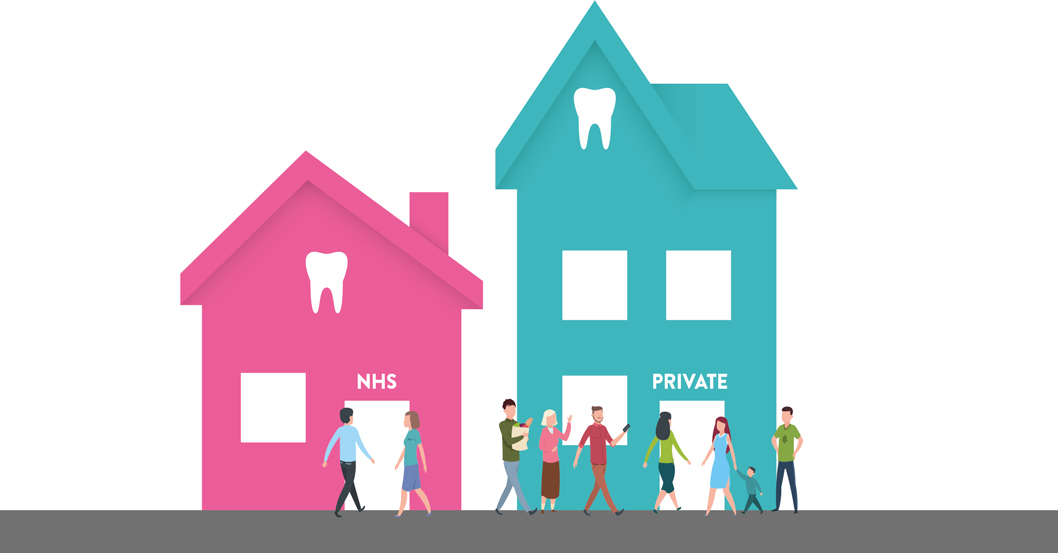Introducing private dentistry into an NHS practice is a step many take. Whether it be on the way to turning fully private or the end goal in itself, offering both services introduces a new element to managing your practice.
I spoke to Lisa Bainham, manager of a mixed NHS and private practice and president of ADAM, about how they make it work…
Les: Tell me about how your practice came to introduce private dentistry?
Lisa: We opened the practice in 1998 with a grant which meant we had to stay in the NHS for five years.
We honoured that commitment but we also knew that we eventually wanted to offer a different service for our patients. We didn’t want to be tied in to working under an NHS contract and having to provide treatment within 10 minutes.
Once those five years passed, we contacted Practice Plan and began moving over to private dentistry. Fifteen years later, we have a split of 80% private dentistry and 20% NHS, and a thriving practice with patients who feel like family. It’s the best thing we ever did.
Les: How did you position the NHS provision against the private offering within the same practice?
Lisa: It is difficult to manage because, obviously, you can’t – and don’t want to – discriminate in any way against NHS patients.
We made a conscious decision that our NHS patients basically got a private service in terms of customer care and the aesthetics of the practice, rather than materials and treatment. They wouldn’t necessarily have realised that was happening, but we feel that everyone deserves excellent customer service – regardless of how much they’re paying.
Eighteen months ago we decided to separate the NHS and private services into different buildings to create a clearer distinction between the two services. The concern is that without this clarity, NHS patients and dentists could question the need to move private.
Plus, as a busy referral practice there could be a five to six-week waiting list for appointments with the endodontist or periodontist. But by opening another practice solely for NHS services, which is open five days a week, we could then free up time and space for these services in our existing building and reduce that waiting time.
Les: Has opening up the second practice solely for NHS patients thrown up any new opportunities or obstacles?
Lisa: We don’t want to be beholden to the NHS, particularly when no one knows what will happen with contract reform. Now we have separate NHS and private practices, we can concentrate on growing our referrals and our private offering which is what keeps us viable from a business point of view.
Some patients who wanted to remain under the NHS have moved over to the new practice, whereas others have chosen to move over to private so that they can stay with their current dentist.
The NHS patients have acted as a feeder to private dentistry in some ways. A lot of patients who started under the NHS have seen the quality of care and treatment we can offer them privately, and they can see the value in that kind of service, and they have joined up to our membership plan.
Les: What advice do you have for a practice that is predominately NHS but wants to introduce some private dentistry?
Lisa: From my experience with ADAM and talking to our 600 members who are practice managers, most NHS practices want to become private.
But taking that first step is scary. They feel secure in the NHS but when you consider the abysmal pay uplifts dentists receive, it’s clear what value the Government puts on NHS dentistry.
You need to have the confidence in yourself that you are providing a good service and good care, and that you deserve to be paid for that. People can be tied up in the ethics of providing NHS services. It’s not about that – we love our NHS patients as much as our private, but we’re very honest about what’s realistic.
NHS dentists work so hard and often without the things you can get by working privately which make your life easier, such as having a decontamination nurse. All these things can be obtained by simply changing how you work slightly.
“People can be tied up in the ethics of providing NHS services. It’s not about that – we love our NHS patients as much as our private, but we’re very honest about what’s realistic.”
Getting that customer journey right is key. And an important part of that is deciding what kind of practice you want to be at heart.
You can be a private practice that sees some NHS patients – and if you’re doing it well, those NHS patients will probably want to move to private with you at some point. But you cannot be an NHS practice that sees private patients, because if patients are paying private fees they will expect a certain type of environment and service.
